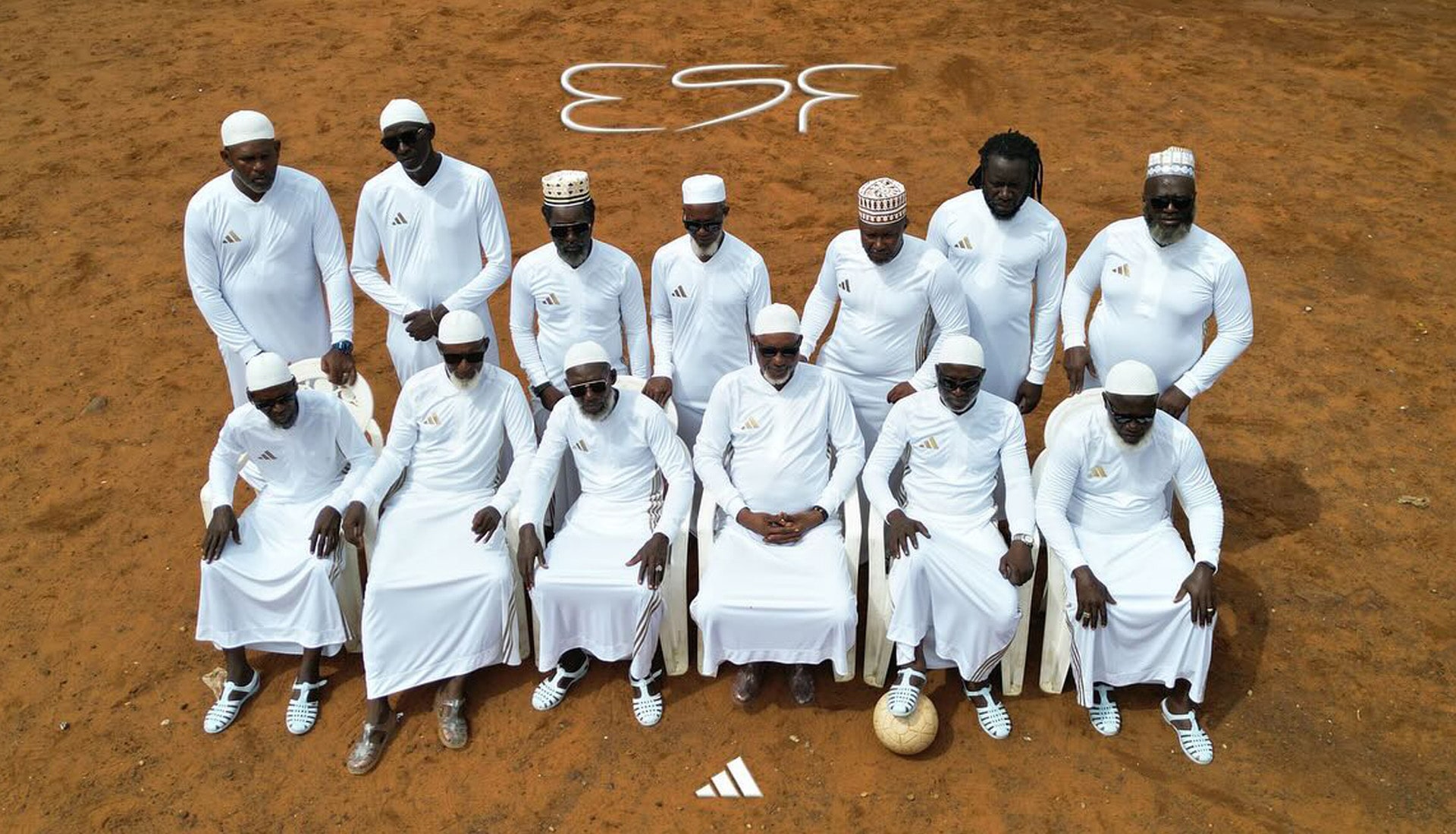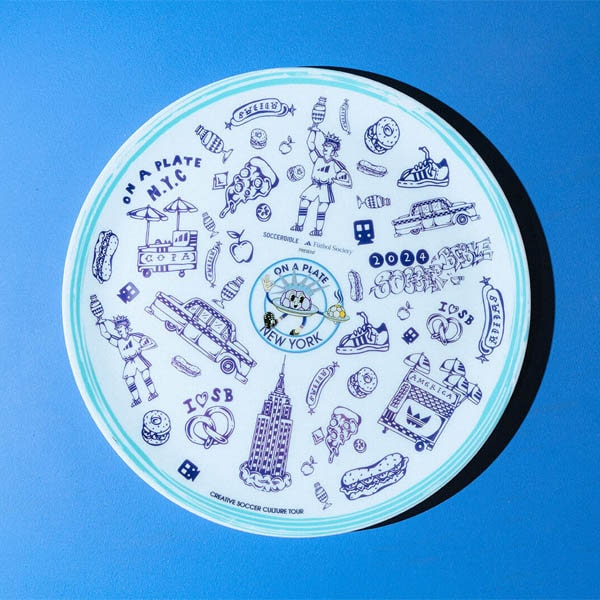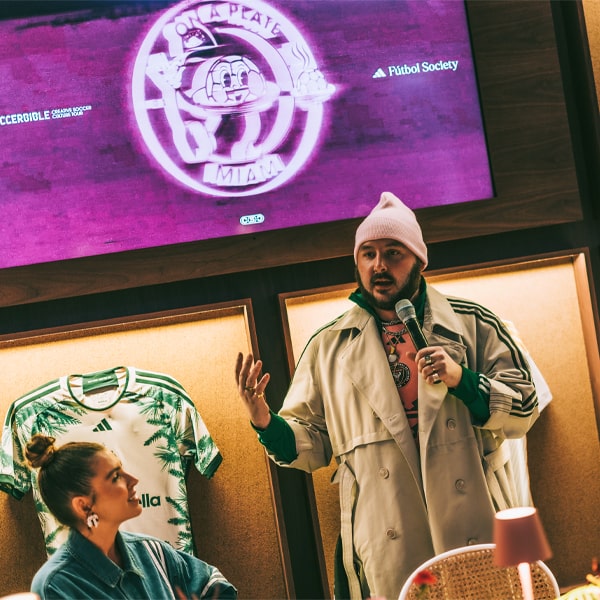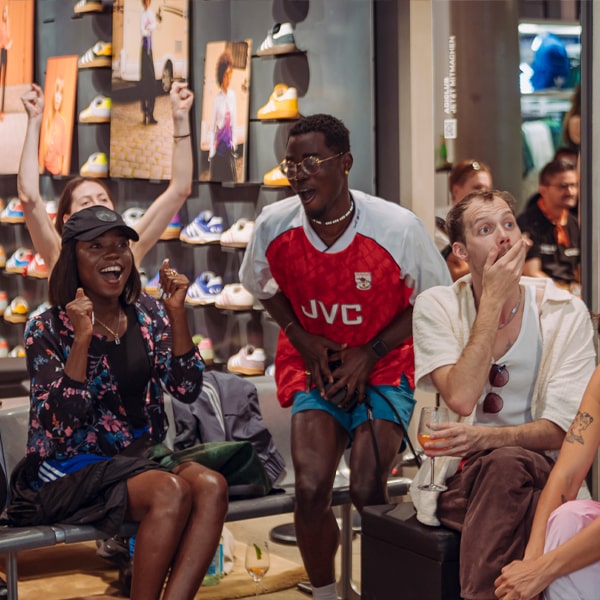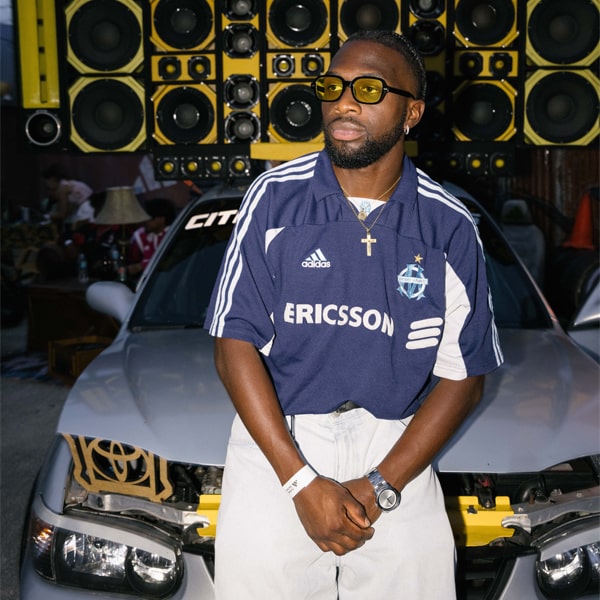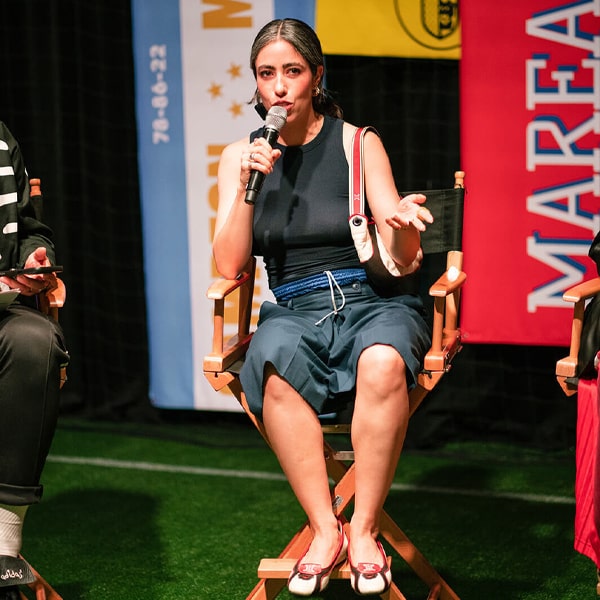In his own words, the rising French-Malian artist talks about designing and photographing functional football qamis, in collaboration with adidas, to playfully showcase his African roots.
A group of African men sit and stand tall wearing pure white qamis, a gold adidas logo branded on their chests and the iconic three stripes streamlining the sides, matching hats and black sunglasses. Émile-Samory Fofana creates art that bursts the European football bubble, celebrating the striking cultural nuances when West Africans and Muslims express their football fandom.
This adidas collaboration unites and elevates the most powerful elements of Fofana’s multi-disciplinary practice. It’s captured in the same way as his rolling Champions League Koulikoro photography series (2018-), right down to the football qamis (long robe) as Fofana has been producing innovative versions for PSG, Chelsea and other clubs for a while. “We developed a functional football qamis for you to be as comfortable on the pitch as on a prayer mat,” Fofana wrote on Instagram, expressing pride that he was allowed to fully execute his creative vision through the design, styling and storytelling campaign. The first drop of the artist’s first adidas range is limited edition and only available for family and friends, but he urged anyone interested in it to slide into his DMs and hosted an explanatory presentation in Paris.
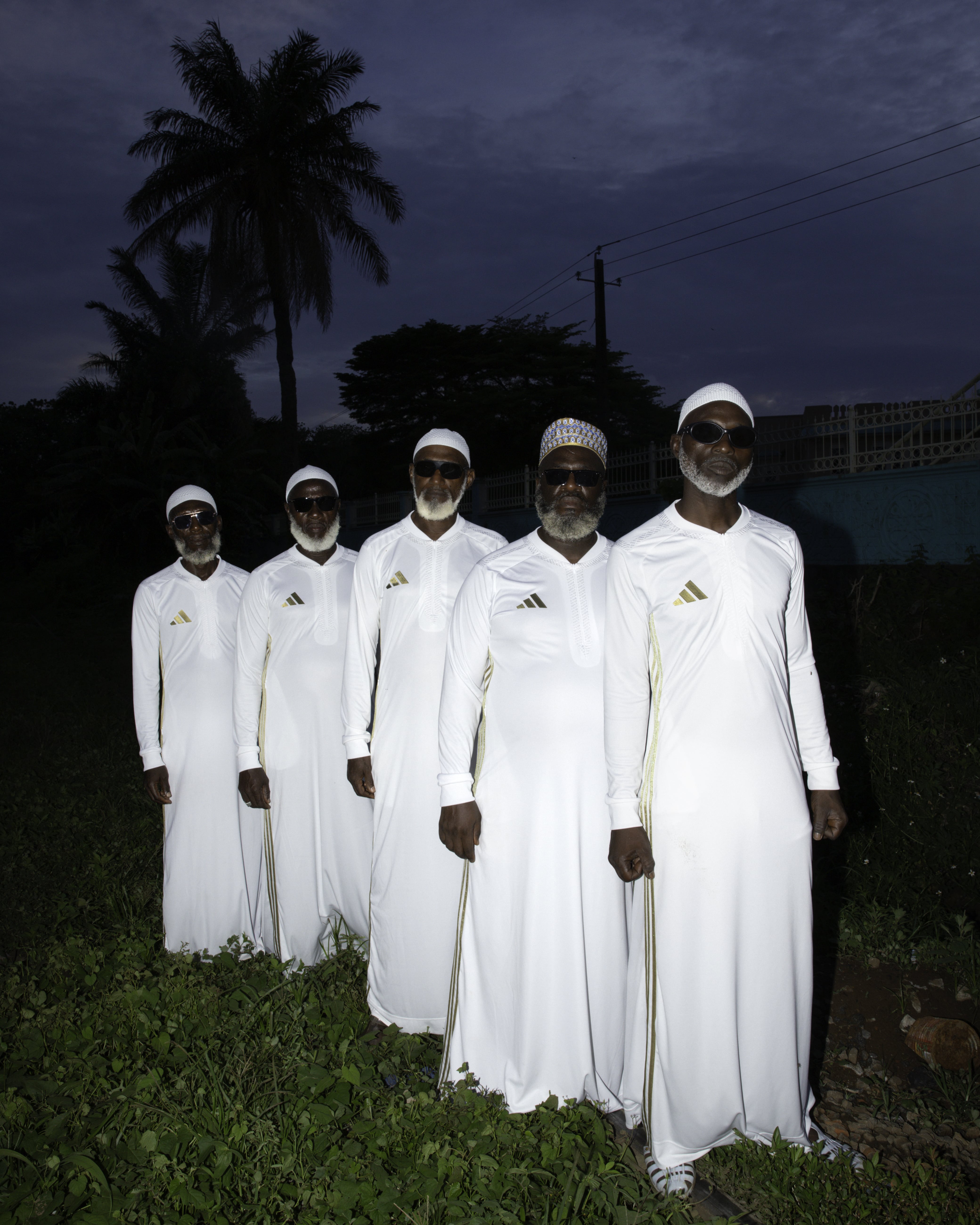
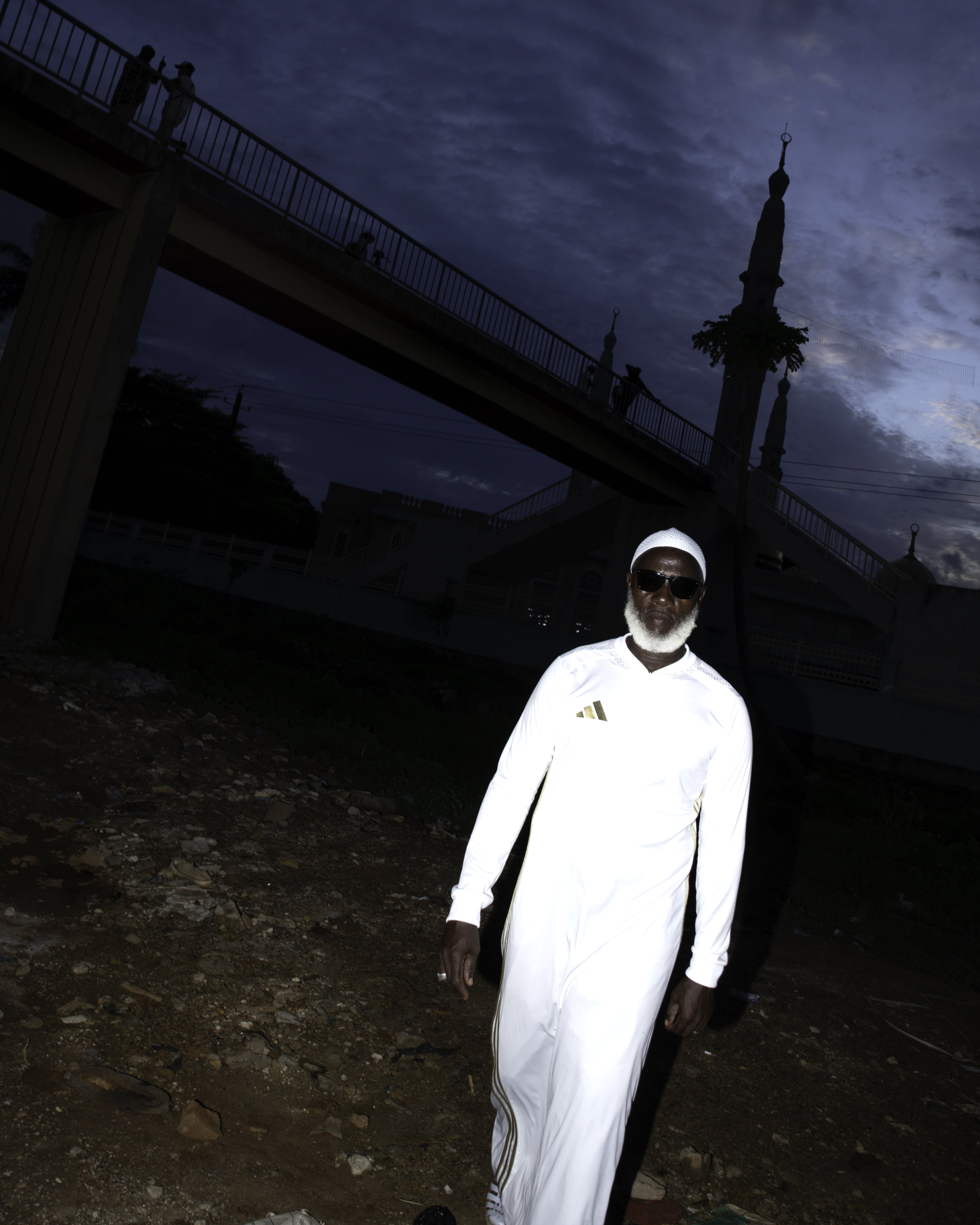
Born near and based in Paris but strongly connected to his roots in Mali, Fofana spent a year working in the African country after graduating from high school and the craftsmanship there, Badian Camara for example, proved to be as inspirational as the German photographer Tobias Zielony. On his return to France, the sometime model studied design, joined the national theatre of Strasbourg and kicked off his career as a comedian and artist.
Below, in his own words, Émile-Samory Fofana talks about the functional football qamis that he started developing with adidas a year ago. He also discusses how the campaign picks up and twists where his well-received photographic series, Champions League Koulikoro, documenting West African football culture leaves off.
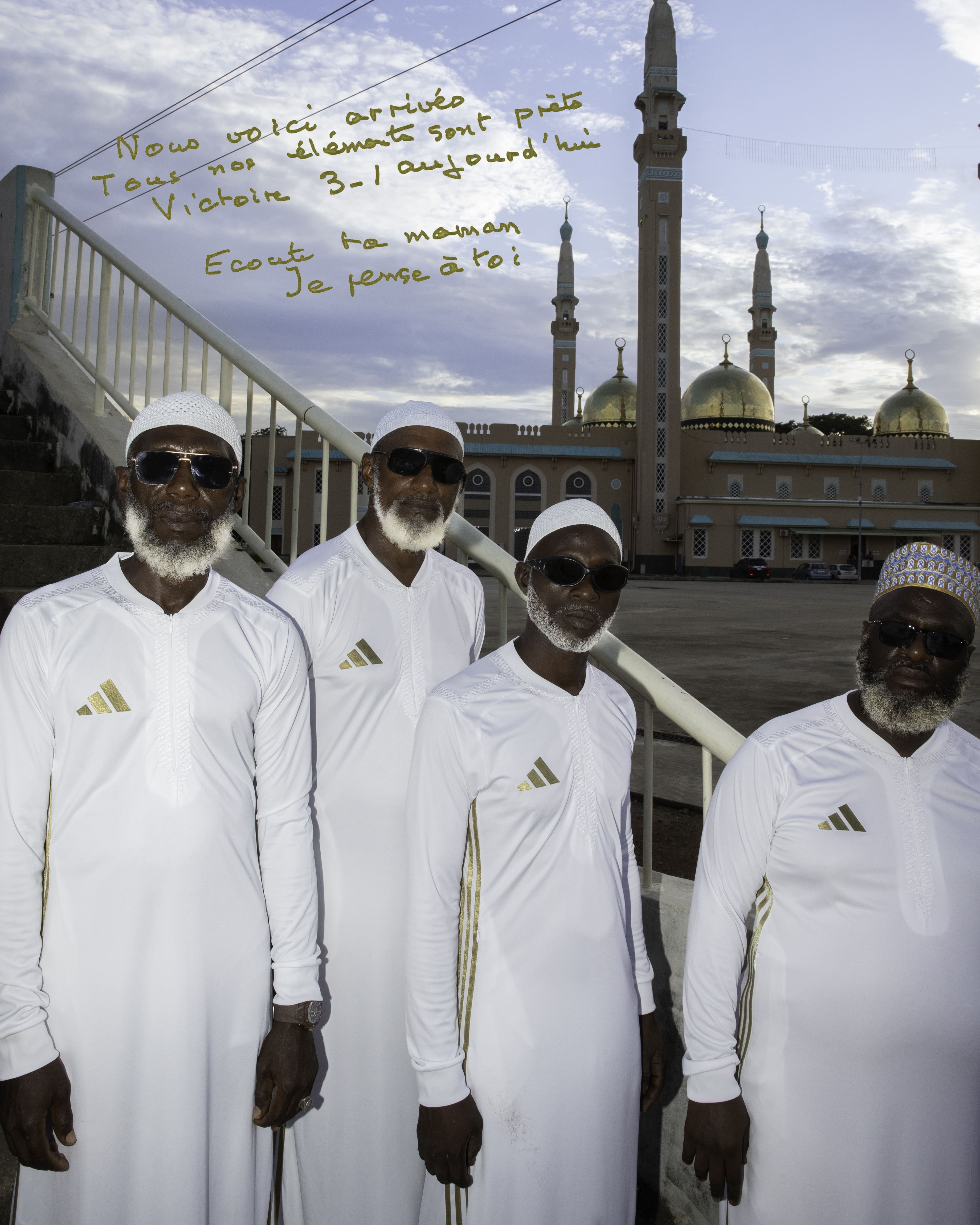
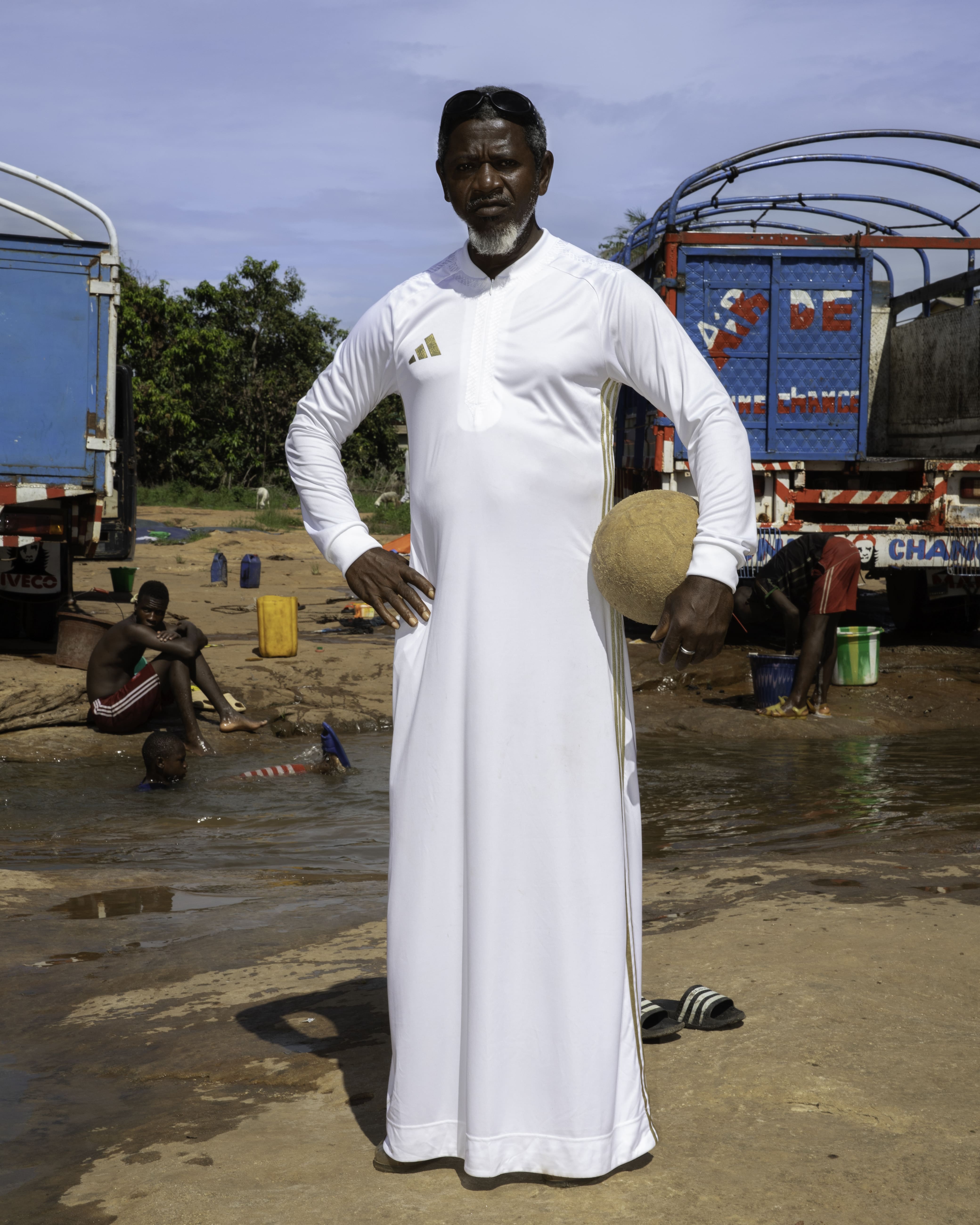
“This collaboration is the intersection of two worlds and represents what happens when they collide. For me, the qamis was always a traditional item – very pure and sunnah – and the material and colour (usually white cotton) make it a staple piece that is quite universal. During my travels in West Africa, I was quite amused to see how they twisted this garment and made it a cultural object more than a religious attire. At the time, I was already working on imagery revolving around sports and performance so when I saw a Manchester Qamis at the Grand Marché de Bamako, it just clicked! I started doing my own bootleg versions that I sold in my neighbourhood in Korofina and taking pictures of the youth wearing them. My initiative was met with great success on both a local level and in the art scene. My goal was never to replace the traditional football kit or the qamis, but to create a hybrid object that could be a playful representation of the cultural habits I had witnessed in Mali.
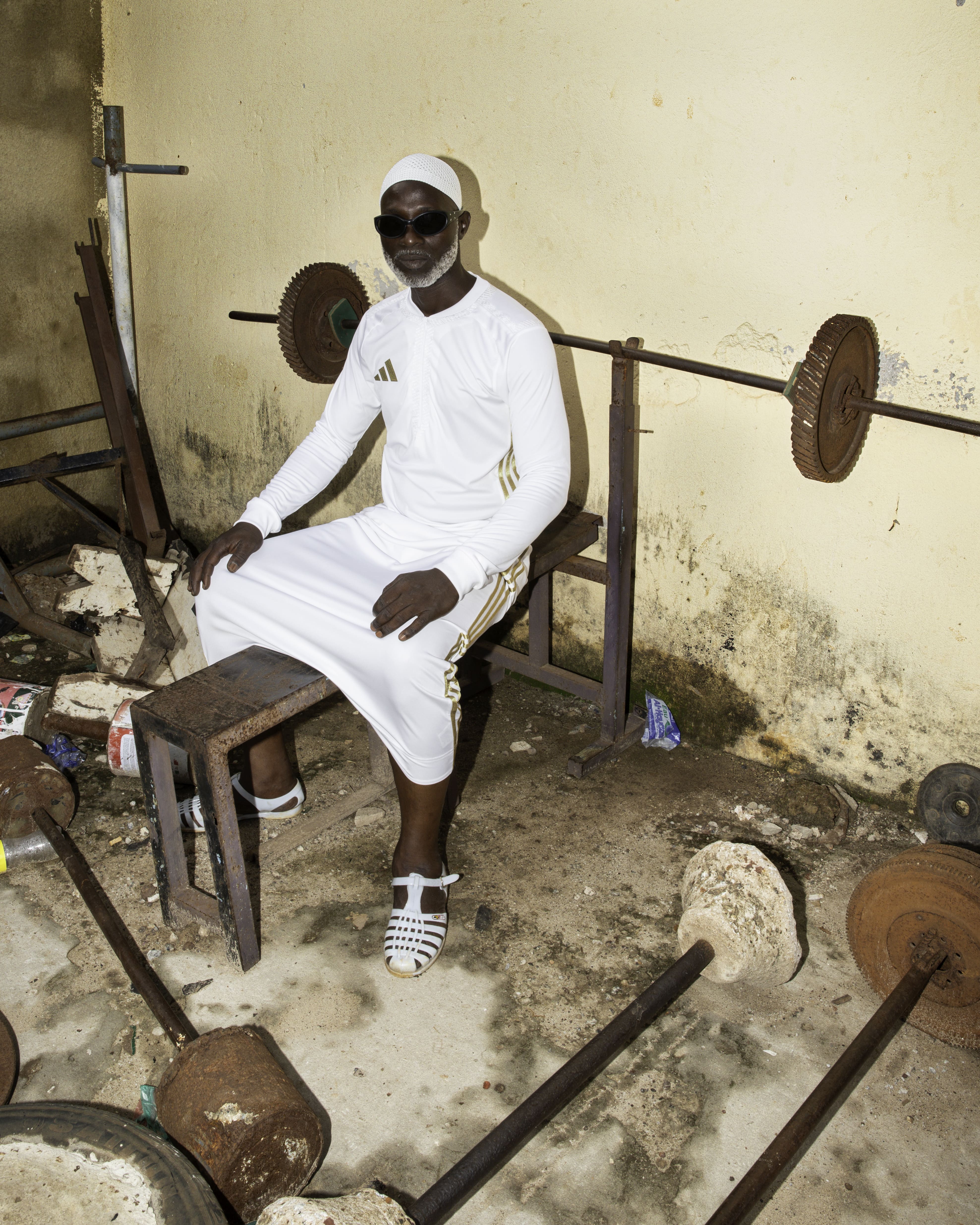
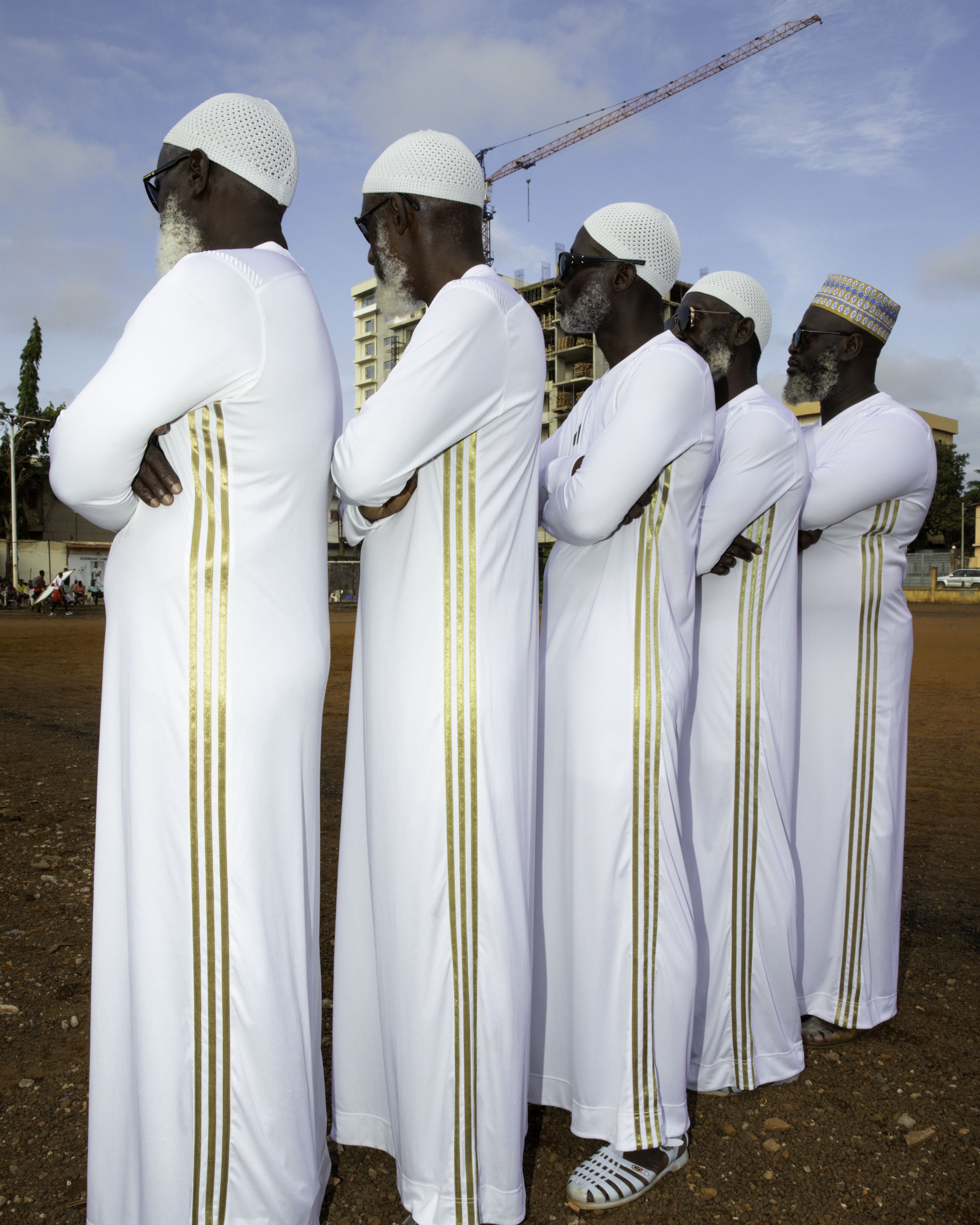
“When adidas contacted me to do a workshop, I was thrilled to take my project to another level and meet with the designers of one of the biggest sports brands who followed my product vision. It was important for me that the qamis had certain characteristics: fast drying, easy to move in, and crease-resistant. Also, I was lucky to lead the initiative from start to finish and to direct and shoot the images in Guinea.
“This has been quite a long process so the political context of the moment is unrelated. I wanted to put out a cultural project – that reflects years of work – to pay tribute to West African culture. Regardless of the political backdrop we’re experiencing with the French election, racism and islamophobia have been an issue for a while so I’m trying not to let it define my work. As an artist, it’s my job to contribute and fight for us.
“For the first images I shot of my ‘fake’ qamis, I chose to pick a young cast because it echoed their day-to-day and I felt like they would be more familiar with the codes I play with. But with the adidas collaboration, I wanted to give it a universal and timeless twist (hence the clean and sober design) and test the product on an older audience. It’s a true proof of concept for me to see it worn by younger and older generations. Maybe older men like it even more than teenagers now and it was designed for men but could easily be worn by women as well.”
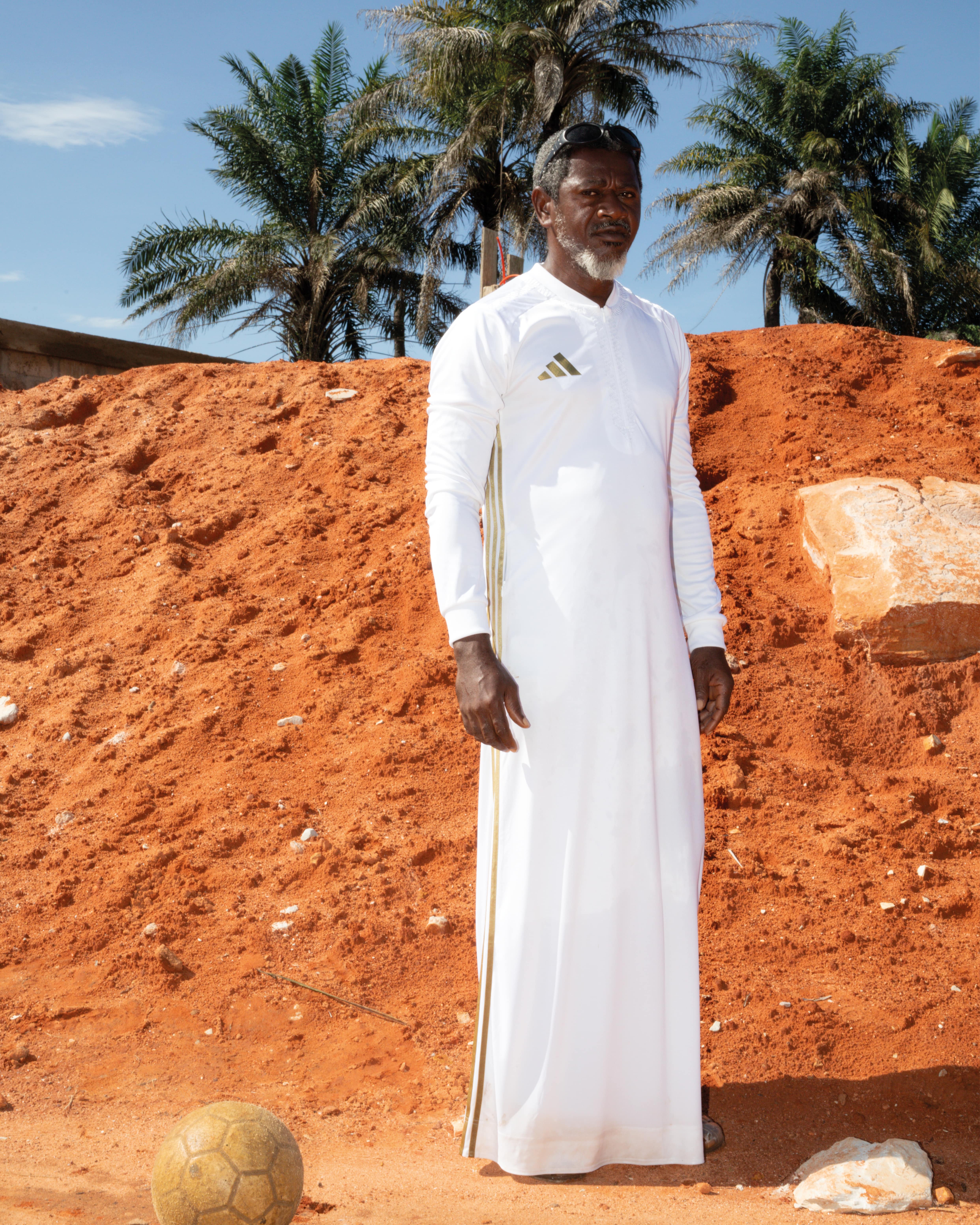
Photography Émile-Samory Fofana
